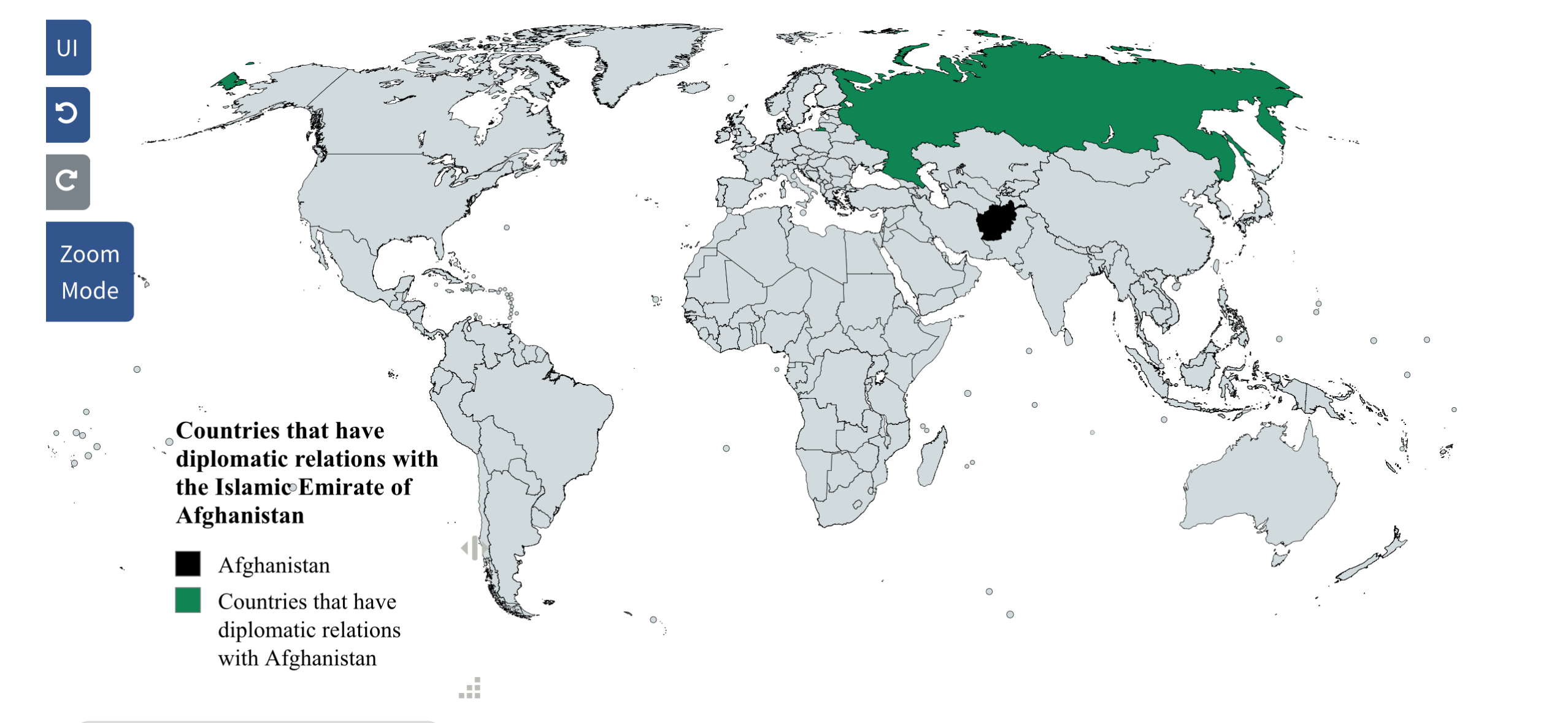Map of Countries with Diplomatic Relations with Afghanistan


Marcus Rodriguez
Historical Geography Expert
Marcus Rodriguez specializes in historical cartography and geographic data analysis. With a background in both history and geography, he brings unique...
Geographic Analysis
What This Map Shows
This map illustrates the countries that currently maintain diplomatic relations with the Islamic Emirate of Afghanistan, highlighting the complex international landscape following the Taliban's return to power in August 2021. As the political scenario in Afghanistan evolved, so did its diplomatic relationships, making this map a vital tool for understanding the geopolitical dynamics in the region.
Deep Dive into Diplomatic Relations
Diplomatic relations are crucial for any country's integration into the international community, influencing trade, security, and humanitarian assistance. Since the Taliban regained control, the nature of these relations has been significantly affected by international sentiments towards the regime. Interestingly, only a handful of countries officially recognize the Islamic Emirate of Afghanistan, while many others remain hesitant, often citing human rights concerns and the Taliban's previous governance record.
As of now, nations such as Pakistan, China, Russia, Iran, and a few others have established some form of diplomatic ties with Afghanistan, primarily driven by geopolitical interests, security concerns, and economic opportunities. For instance, Pakistan has historically had close ties with the Taliban and continues to play a significant role in Afghanistan’s political landscape. The border dynamics between the two countries are intricate, making their diplomatic relationship critical for regional stability.
China has expressed interest in Afghanistan, particularly in terms of economic investments and infrastructure development, as exemplified by the Belt and Road Initiative. This relationship is motivated by China's desire to secure its western borders and access natural resources, while also countering the influence of the United States and India in Central Asia.
On the other hand, Russia's engagement with Afghanistan highlights its interest in combating extremism and stabilizing the region. Russia has been keen to maintain a dialogue with the Taliban, viewing it as a necessary step to prevent the spillover of terrorism into its neighboring states. Interestingly, Iran has also engaged with Afghanistan, focusing on border security and economic cooperation, especially in areas like trade and water management.
However, the relationships these countries maintain with Afghanistan are often fraught with complexities, as they must balance their interests with the broader international community's stance on the Taliban. Countries like the United States and members of the European Union have chosen to withhold recognition, advocating for human rights and women's rights as preconditions for engagement. This creates a unique situation where diplomatic relations are heavily contingent on internal policies of the Afghan government.
Regional Analysis
When we break down the map regionally, it’s evident that South Asia plays a vital role in shaping Afghanistan’s diplomatic ties. Pakistan's influence is paramount, as it shares a long border with Afghanistan and has historically provided refuge to Afghan leaders. In contrast, India's absence from the list of recognized countries signifies a complex interplay of regional geopolitics, particularly in light of India's stance against the Taliban.
In Central Asia, nations like Uzbekistan and Tajikistan are wary of the Taliban’s rule, often fearing the resurgence of extremism that could threaten their own security. Interestingly, these countries have chosen to engage diplomatically with caution, emphasizing border security and counterterrorism as key areas of cooperation while remaining non-recognizers of the Taliban regime.
In the Middle East, Iran’s diplomatic relations with Afghanistan are multi-faceted, focusing on shared interests such as migration and economic collaboration. The historical and cultural ties between the two countries foster a more nuanced engagement, even as Iran remains critical of the Taliban's policies.
Significance and Impact
Understanding the diplomatic relations depicted in this map is crucial for several reasons. Firstly, it sheds light on how global power dynamics are shifting in response to the Taliban's control over Afghanistan. As countries reassess their foreign policies, the implications for security, trade, and humanitarian efforts are profound. For instance, Afghanistan’s economy is heavily reliant on aid, and the lack of widespread recognition could limit its access to international funds and assistance.
Moreover, the evolving diplomatic landscape will likely influence regional security. Countries that engage with the Taliban may face pressure from the international community, while those that choose to isolate Afghanistan could inadvertently contribute to its instability. This intricate dance of diplomacy underscores the importance of not only recognizing these relationships but also understanding their broader implications in a rapidly changing world.
As we look to the future, it’s essential to consider how these diplomatic ties will evolve, especially as the situation in Afghanistan remains fluid. Will other nations step forward to engage, or will the current diplomatic status quo persist? The answers to these questions will significantly impact both Afghanistan and the broader region.
Visualization Details
- Published
- October 18, 2025
- Views
- 44
Comments
Loading comments...